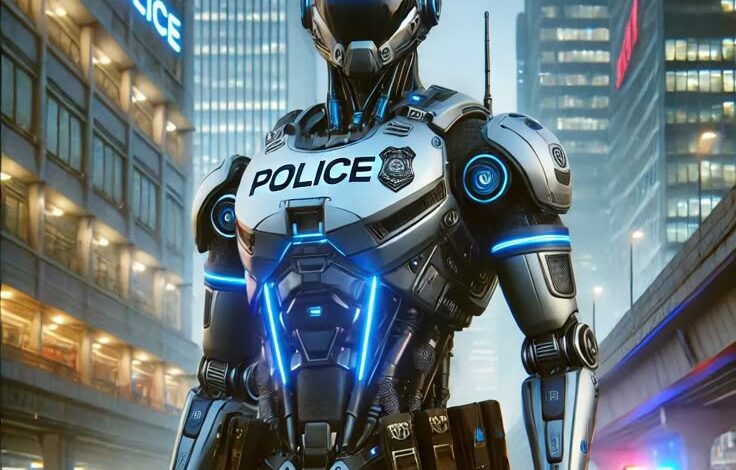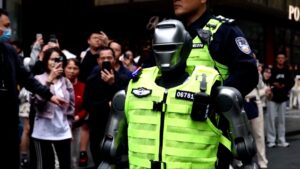Chinese humanoid police robots patrolling streets go viral; netizens call it ‘crazy times’

China has introduced humanoid robots to patrol streets alongside police in Shenzhen, sparking both curiosity and safety concerns. These robots interact with pedestrians and execute tasks, but incidents like a recent malfunction raising public safety questions highlight issues in AI technology. The advancements and challenges in deploying AI robots are drawing global attention and humorous reactions online.
China is taking great steps in the realm of robotics with humanoid robots featuring more and more in daily lives. The intelligent machines are currently spotted patrolling the streets, assisting human policemen, and interfacing with humans. Artificially powered, the robots can conduct tasks such as obeying verbal commands, winking at passerby, and even shaking hands. The quick proliferation of these robots has caught the eye of the internet, and videos demonstrating their realistic features are going viral. But with potential
comes problems to be solved, as recent accidents have left authorities questioning the consistency of AI technology in the open.
China introduces humanoid robots patrolling streets with police

Recently, in Guangdong province’s Shenzhen, sophisticated machines have been seen roaming the streets together with police officers, undertaking every type of job; video goes viral on X (formerly Twitter). Wearing high-visibility jackets, the robots can chat with pedestrians, accept voice instructions, and even execute more personal gestures such as handshaking. The general public response to these realistic robots has been mixed in the way curiosity and interest, particularly after a viral video of one of these robot officers on duty went viral.
An onlooker expressed on social media, when posting the video, “Human police and humanoid robot police (Shenzhen ENGINEAI PM01).” Another clip showing the outdoor training of the robot added to online onlookers’ awe. The sophisticated functionality of these artificial intelligence-powered robots is making the world sit up and take note of the promise of humanoid robots in mundane work.
China’s humanoid robots spark humorous online reactions
As the videos became popular, the response online was one of humor complemented by expectation.
Some of them jokingly compared it to the moment when the robot was energized with the AI in Chappie, while others took it as signifying “the end of an era.”. The “Serve the public trust, protect the innocent, uphold the law,” the classic line from the Robocop movies, also made it into comments, depicting the convergence of popular culture allusion and AI in modern-day discourse. The Transformers movie franchise was also humorously referenced by some internet commentators, giving “President Optimus” in jest as a sign that robot law enforcement is descending. Overall tone, however, can perhaps be encapsulated in the reaction of one commenter, who matter-of-factly said, “These are crazy times.”
China’s humanoid robots face safety concerns after malfunction during public event
 Although robots of a human form have struck the public’s imagination on a wide scale, all encounters weren’t without a hitch. On February 9, during one such anniversary reunion in Tianjin, one robot developed a technical glitch. The robot, which wore a colorful jacket, launched a surprise attack on the crowd and caused people to panic before the security guards could intervene. The incident was instantaneously recorded and posted online, and this further questioned whether such AI robots are safe to be used in public.
Although robots of a human form have struck the public’s imagination on a wide scale, all encounters weren’t without a hitch. On February 9, during one such anniversary reunion in Tianjin, one robot developed a technical glitch. The robot, which wore a colorful jacket, launched a surprise attack on the crowd and caused people to panic before the security guards could intervene. The incident was instantaneously recorded and posted online, and this further questioned whether such AI robots are safe to be used in public.
Event organizers were quick to soothe public concern, labeling the accident a “robotic failure” and assuring members of the public that every safety test had been conducted on the robot prior to release.
They also promised to undertake more stringent measures to avoid such hitches in the future. Nevertheless, the accident ignited a new controversy concerning the reliability of AI technology when it comes to the provision of public safety. Individuals started raising questions about the extent to which one could have faith in robots, especially where their malfunction would yield unforeseen threats











